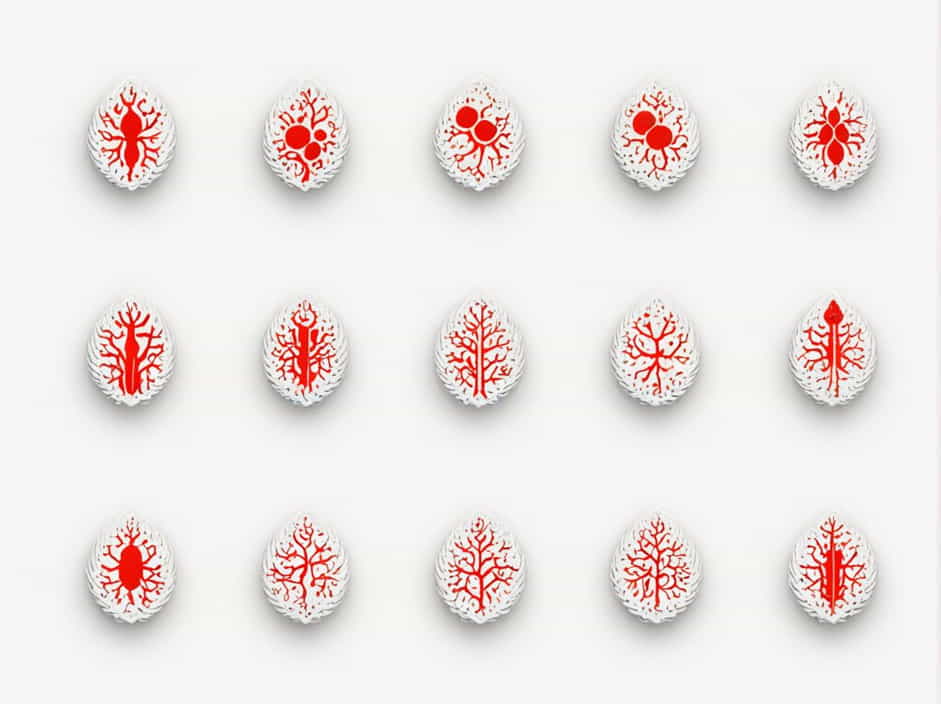Rab proteins are essential regulators of intracellular trafficking, playing a crucial role in vesicle transport, membrane fusion, and organelle identity. Among their many functions, they contribute to the compartmentalization of the endosomal system, ensuring that cargo is efficiently transported, sorted, and delivered to the correct destinations.
The endosomal system is a highly dynamic network of vesicles and membranes that regulates endocytosis, recycling, and degradation of cellular materials. Rab proteins, as small GTPases, act as molecular switches that coordinate these processes by recruiting specific effector proteins to different compartments.
This topic explores how Rab proteins orchestrate the endosomal system, highlighting their functions, mechanisms, and significance in cellular biology.
What Are Rab Proteins?
Rab proteins belong to the Ras superfamily of small GTPases and are key regulators of intracellular membrane trafficking. There are over 60 Rab proteins in humans, each associated with a specific organelle or membrane compartment.
Key Features of Rab Proteins
- Function as molecular switches, cycling between an active GTP-bound state and an inactive GDP-bound state.
- Recruit effector proteins that regulate vesicle formation, movement, and fusion.
- Establish the identity of intracellular compartments by marking membranes for specific trafficking pathways.
The Role of Rab Proteins in Membrane Trafficking
Rab proteins help regulate the direction, timing, and specificity of vesicular transport by:
- Defining organelle identity (e.g., Rab5 for early endosomes, Rab7 for late endosomes).
- Regulating vesicle movement along the cytoskeleton.
- Facilitating docking and fusion of vesicles with target membranes.
The Endosomal System and Its Compartments
The endosomal system consists of interconnected vesicles and membrane-bound compartments involved in sorting and directing cargo within the cell.
Key Endosomal Compartments
- Early Endosomes – Initial sorting station for internalized material.
- Recycling Endosomes – Return select cargo to the plasma membrane.
- Late Endosomes – Transport cargo for degradation in lysosomes.
- Multivesicular Bodies (MVBs) – Intermediates between late endosomes and lysosomes.
- Lysosomes – Degrade unwanted cellular components.
Each of these compartments is marked and regulated by specific Rab proteins, ensuring efficient compartmentalization and trafficking.
Rab Proteins and Endosomal Compartmentalization
1. Rab5 and Early Endosomes
Rab5 is a master regulator of early endosomes, playing a critical role in:
- Endocytic vesicle fusion to form early endosomes.
- Cargo sorting for either recycling or degradation.
- Recruitment of effectors such as EEA1, which mediates tethering and fusion.
Rab5 activation maintains the distinct identity of early endosomes, preventing premature fusion with other compartments.
2. Rab4 and Rab11 in Recycling Endosomes
Recycling pathways are essential for maintaining cell surface protein composition. Two key Rab proteins regulate this process:
- Rab4: Mediates fast recycling directly from early endosomes to the plasma membrane.
- Rab11: Controls slow recycling through the perinuclear recycling compartment.
These Rabs ensure that receptors like transferrin receptors and other important surface proteins are efficiently recycled.
3. Rab7 and Late Endosomes
As endosomes mature, Rab5 is replaced by Rab7, which promotes:
- Maturation of late endosomes.
- Transport to lysosomes for degradation.
- Interaction with dynein for movement along microtubules.
Rab7 ensures that degraded materials reach lysosomes, preventing their accumulation in the cytoplasm.
4. Rab9 in Retrograde Transport
Rab9 regulates the transport of mannose-6-phosphate receptors (M6PRs) from late endosomes back to the Golgi. This retrograde pathway is essential for lysosomal enzyme trafficking.
Without proper Rab9 function, lysosomal enzymes fail to reach their destination, leading to cellular dysfunction and disease.
5. Rab27 and Lysosome-Related Organelles
Rab27 controls the trafficking of specialized lysosome-related organelles, such as:
- Melanosomes in pigment cells.
- Lytic granules in immune cells.
This regulation is crucial for processes like skin pigmentation and immune responses.
How Rab Proteins Maintain Endosomal Identity
Rab proteins prevent mixing of membrane compartments by:
- Recruiting distinct effectors that define organelle-specific functions.
- Regulating vesicle fusion specificity through tethering proteins.
- Controlling membrane dynamics by interacting with motor proteins and lipid-modifying enzymes.
For example, Rab5-to-Rab7 conversion is a crucial step in endosome maturation. This transition ensures cargo progresses from early to late endosomes, rather than being recycled prematurely.
Dysfunction of Rab Proteins and Disease
Mutations or misregulation of Rab proteins are linked to various diseases, including:
1. Neurodegenerative Diseases
- Alzheimer’s disease: Impaired Rab5 and Rab7 function disrupts endosomal trafficking, leading to amyloid-beta accumulation.
- Parkinson’s disease: Defects in Rab29 affect lysosomal degradation, contributing to toxic protein buildup.
2. Cancer
- Overactive Rab25 promotes tumor progression by enhancing cell migration and invasion.
- Dysregulation of Rab7 alters lysosomal degradation, leading to cancer cell survival.
3. Immune Disorders
- Rab27 mutations cause Griscelli syndrome, affecting immune cell function and pigmentation.
- Rab5 dysfunction impairs antigen processing in dendritic cells, weakening immune responses.
Understanding Rab protein pathways can provide potential therapeutic targets for these diseases.
Rab proteins are master regulators of the endosomal system, ensuring that intracellular trafficking remains highly organized and compartmentalized. By defining distinct vesicular identities, Rab proteins facilitate cargo transport, membrane fusion, and organelle maturation.
Their roles in early endosomes (Rab5), recycling (Rab4, Rab11), late endosomes (Rab7), and lysosomal transport (Rab27) highlight their significance in cellular homeostasis.
Dysfunction in Rab-mediated trafficking contributes to neurodegeneration, cancer, and immune disorders, making these proteins essential for cell survival and human health.
Ongoing research into Rab protein interactions and regulatory mechanisms continues to provide valuable insights into cellular organization and disease pathology.
